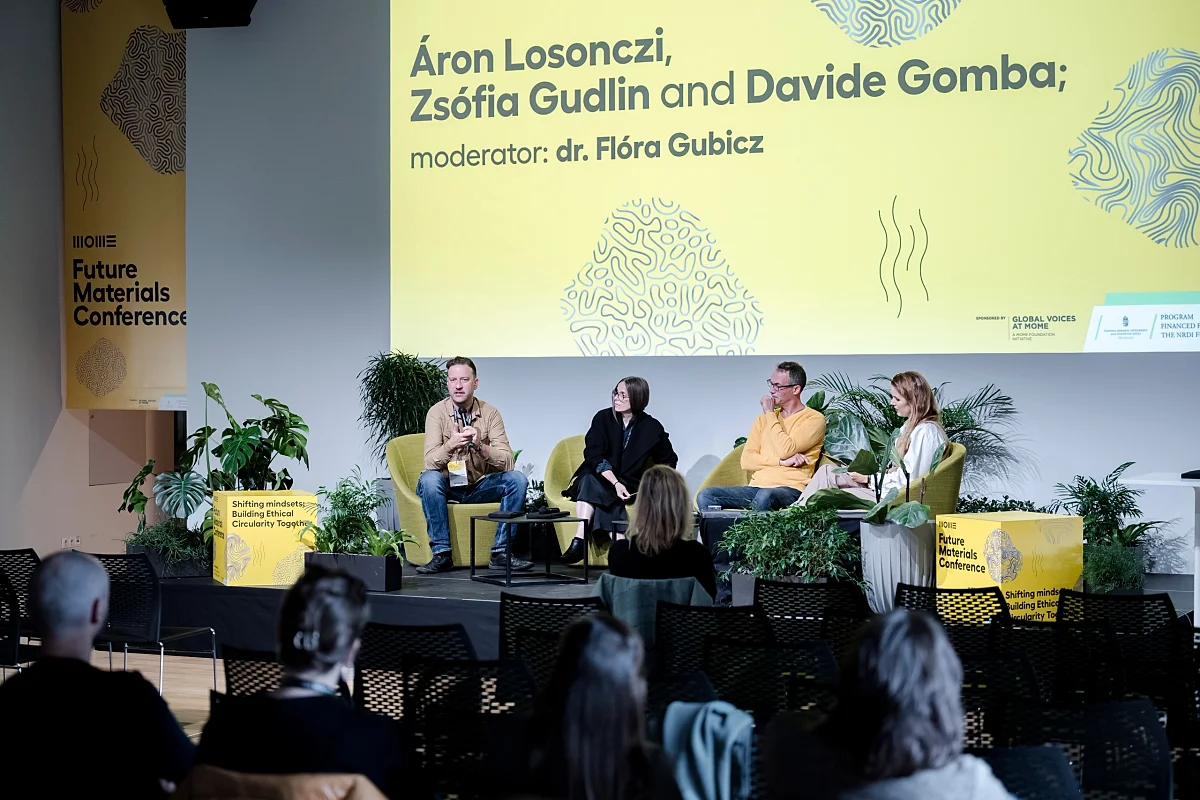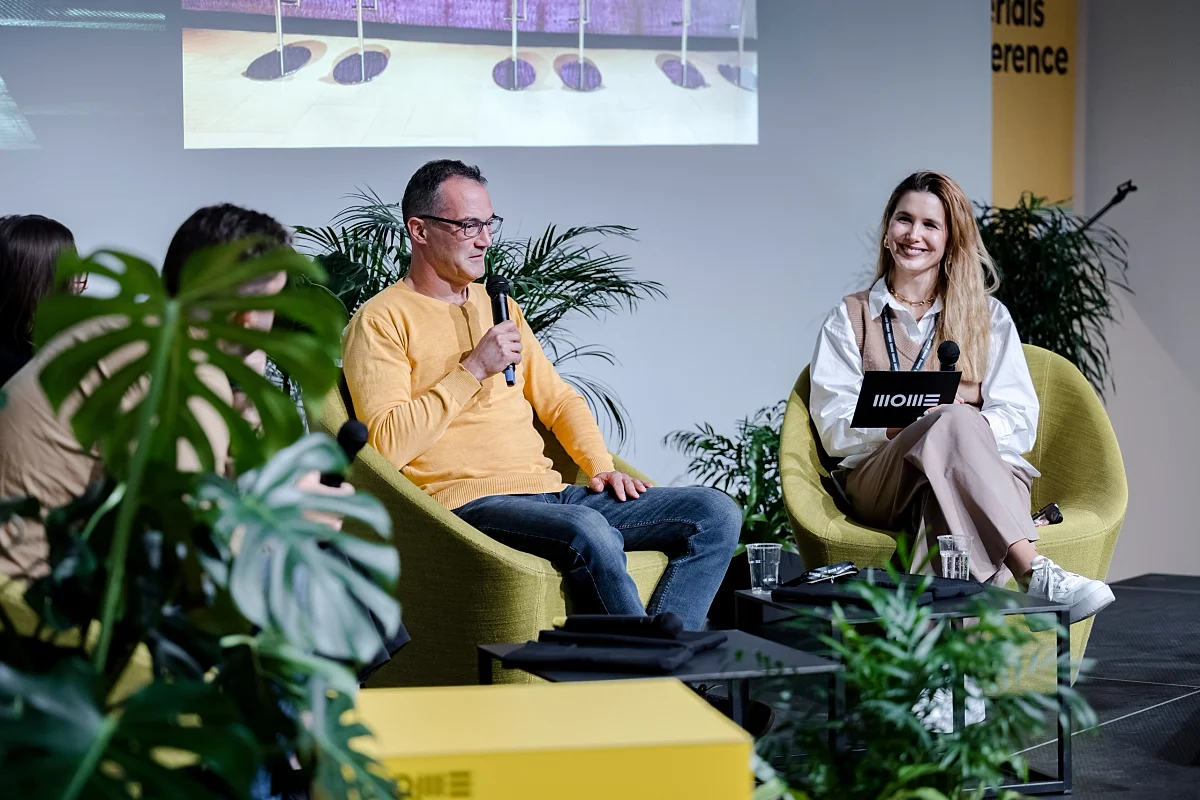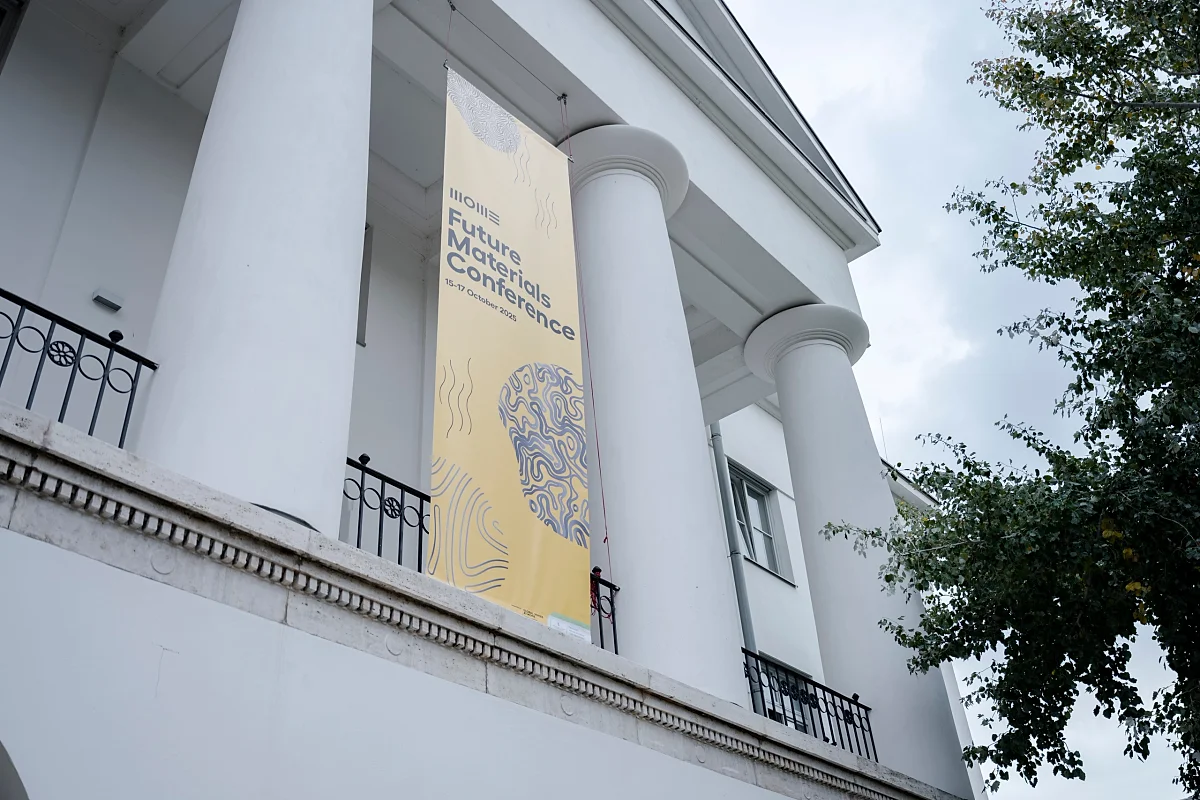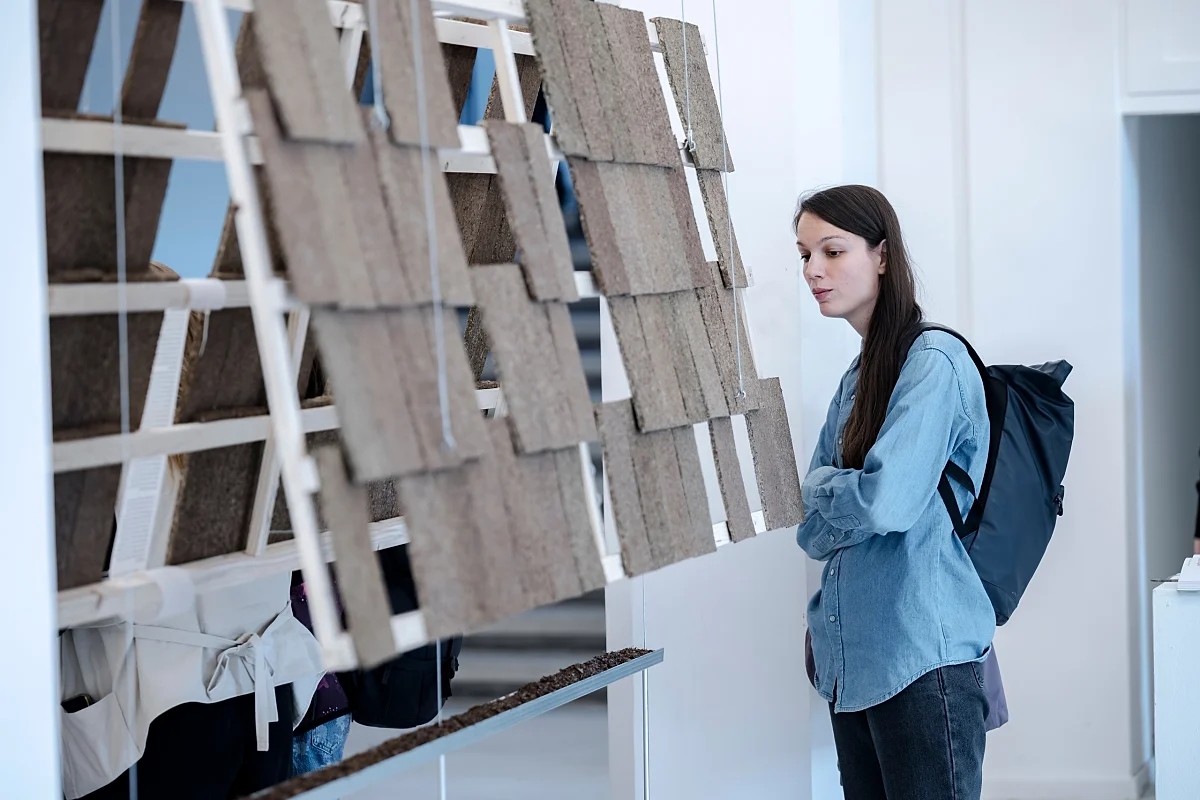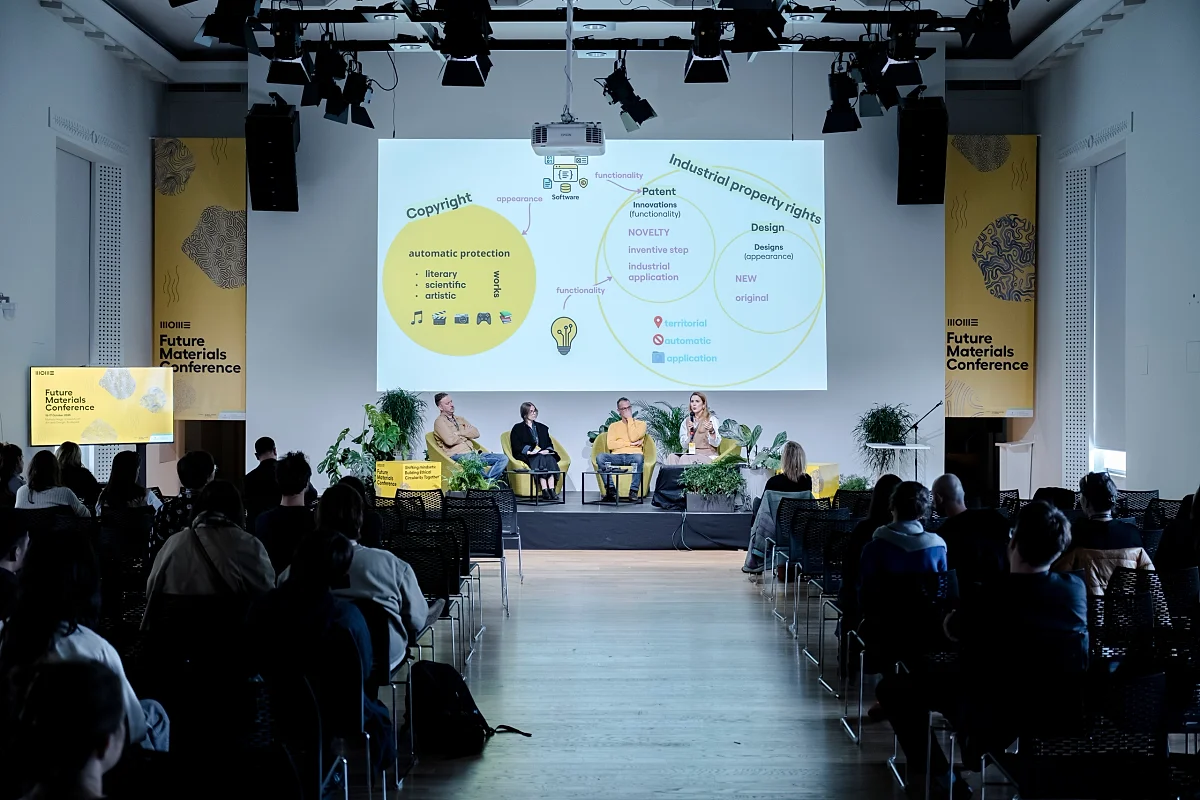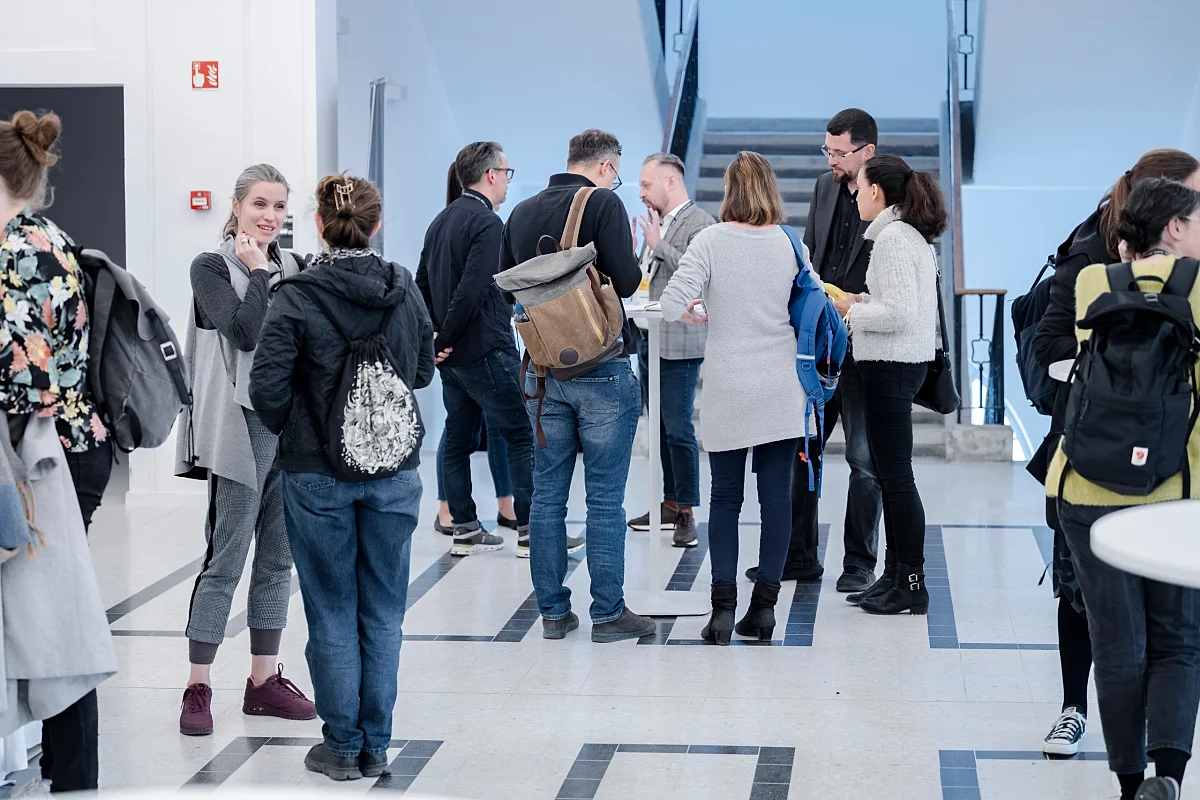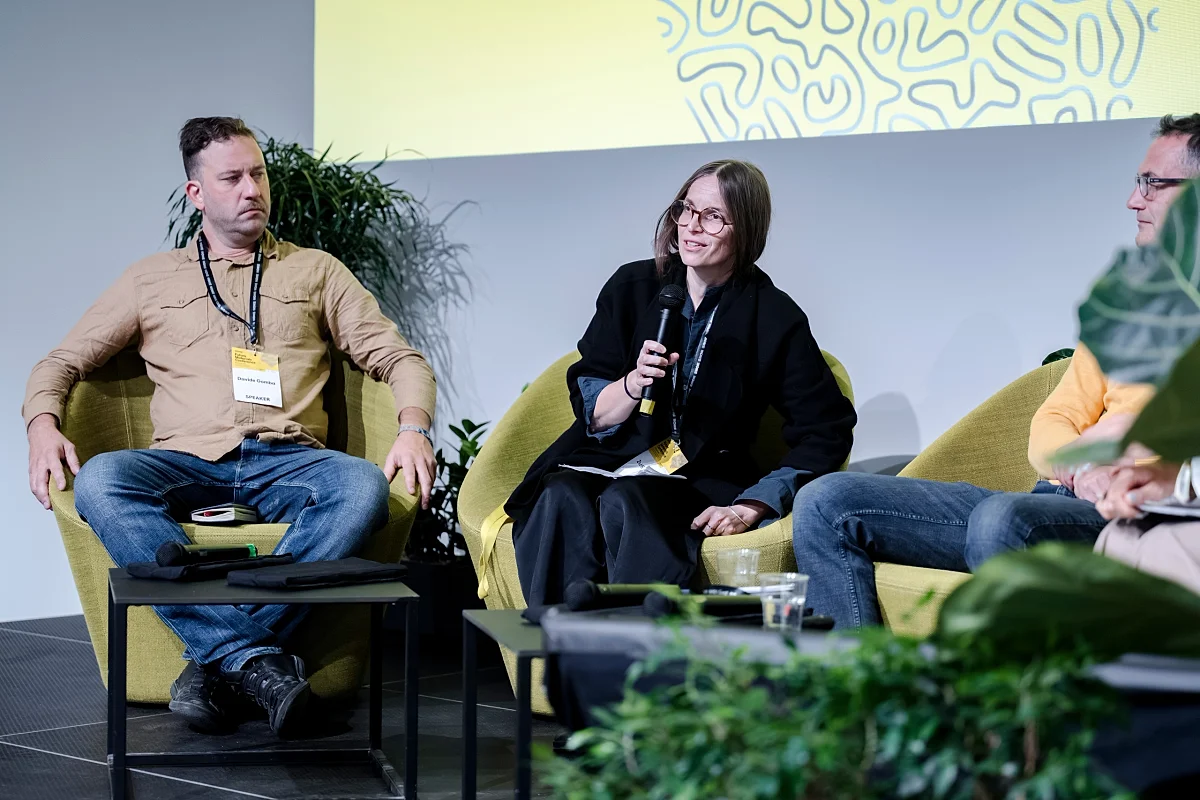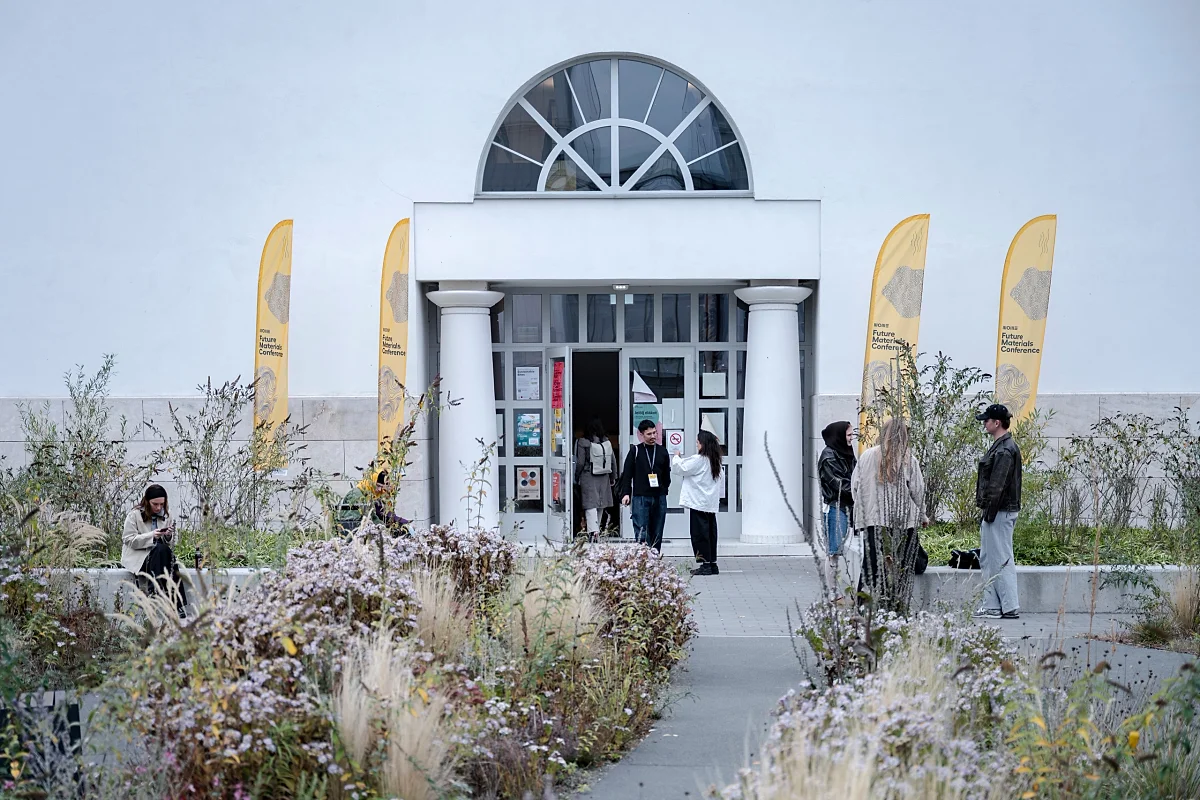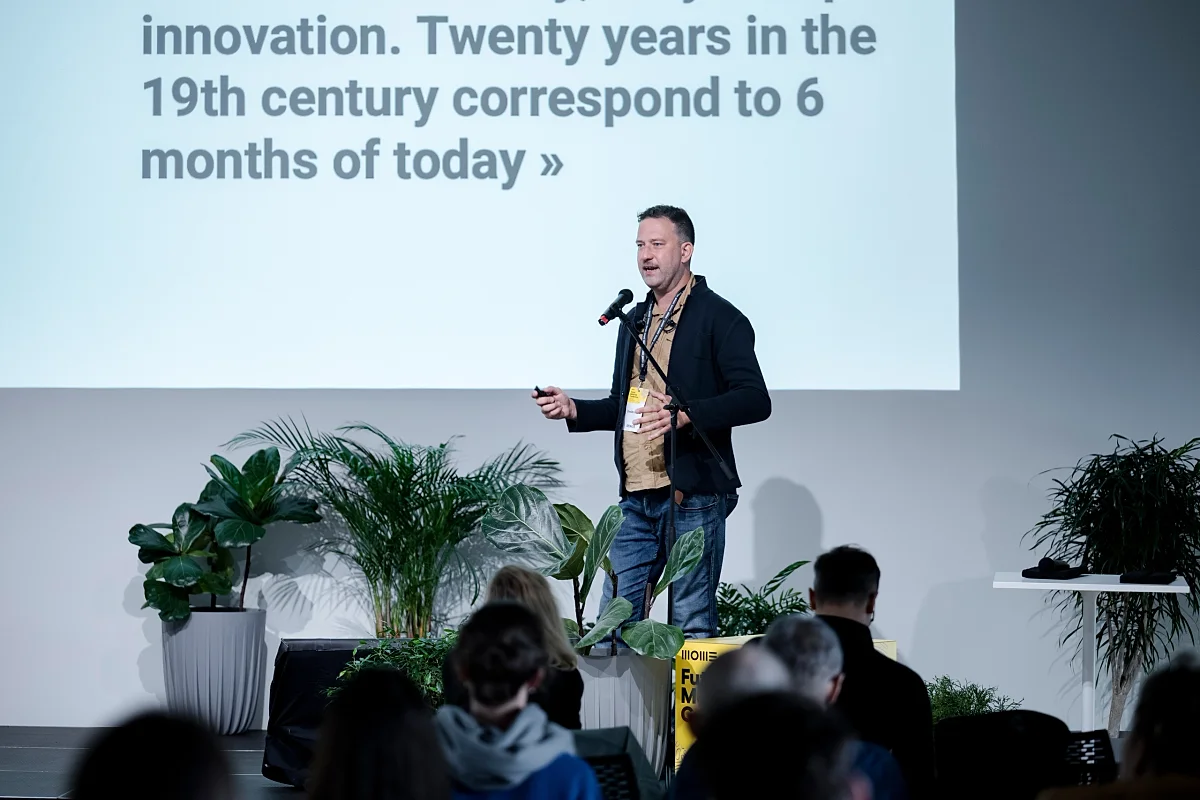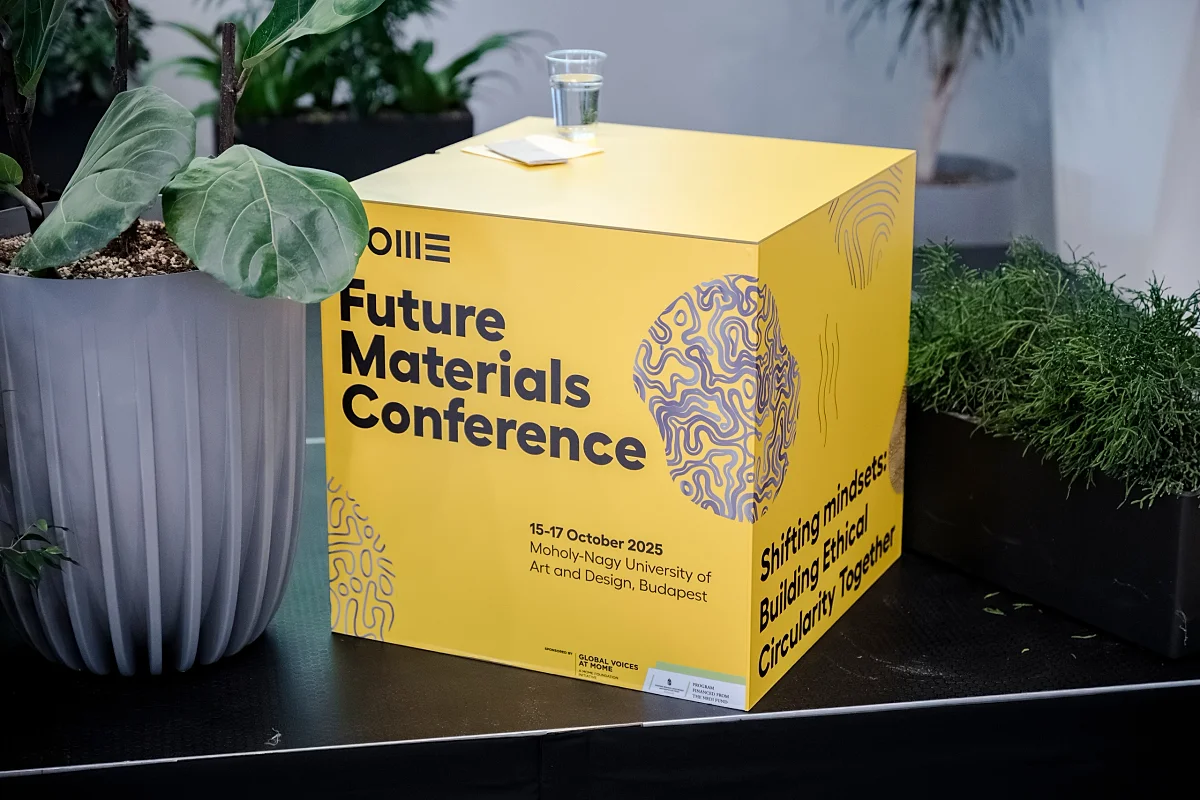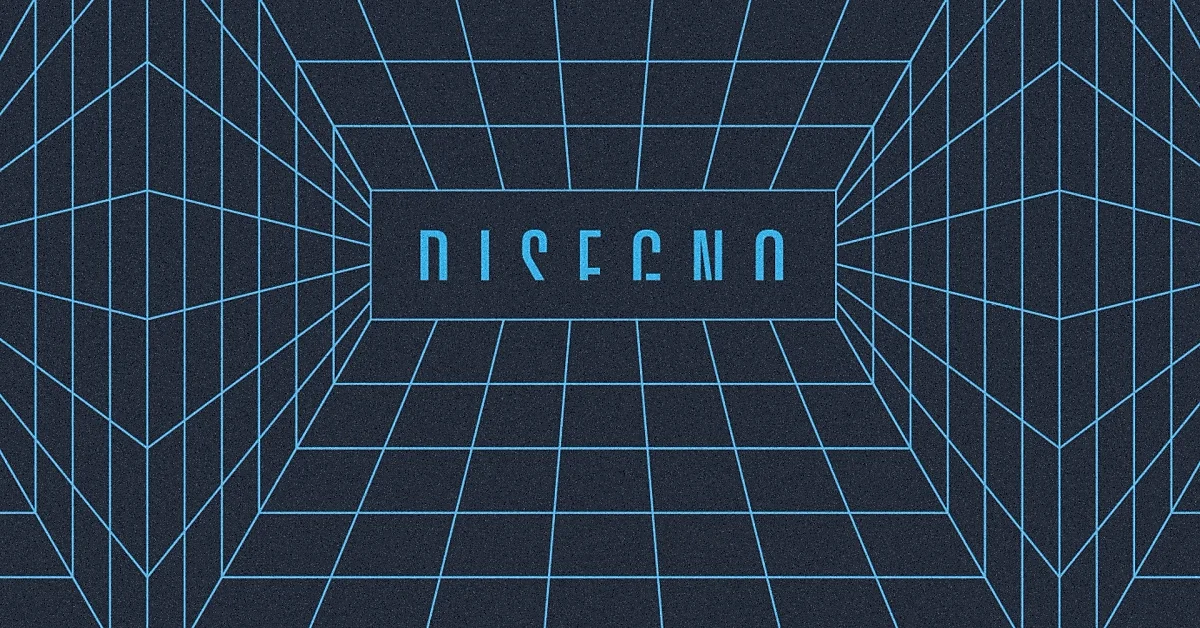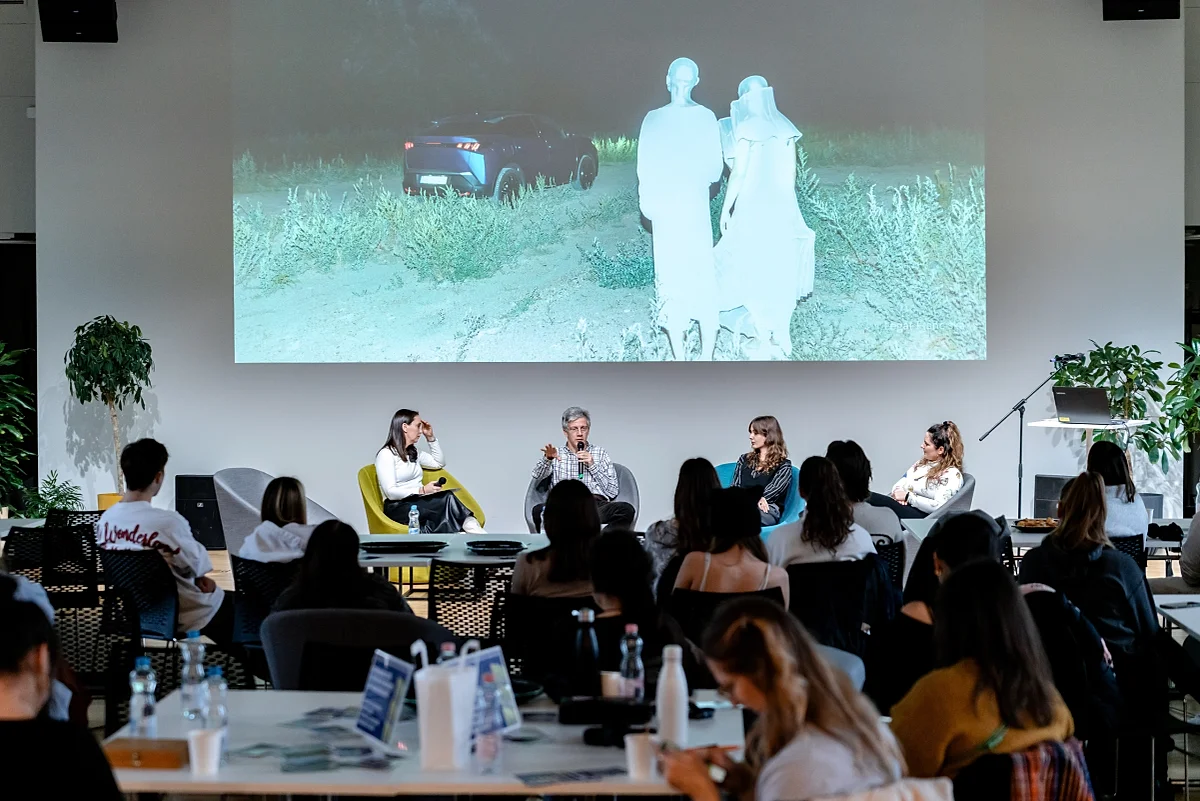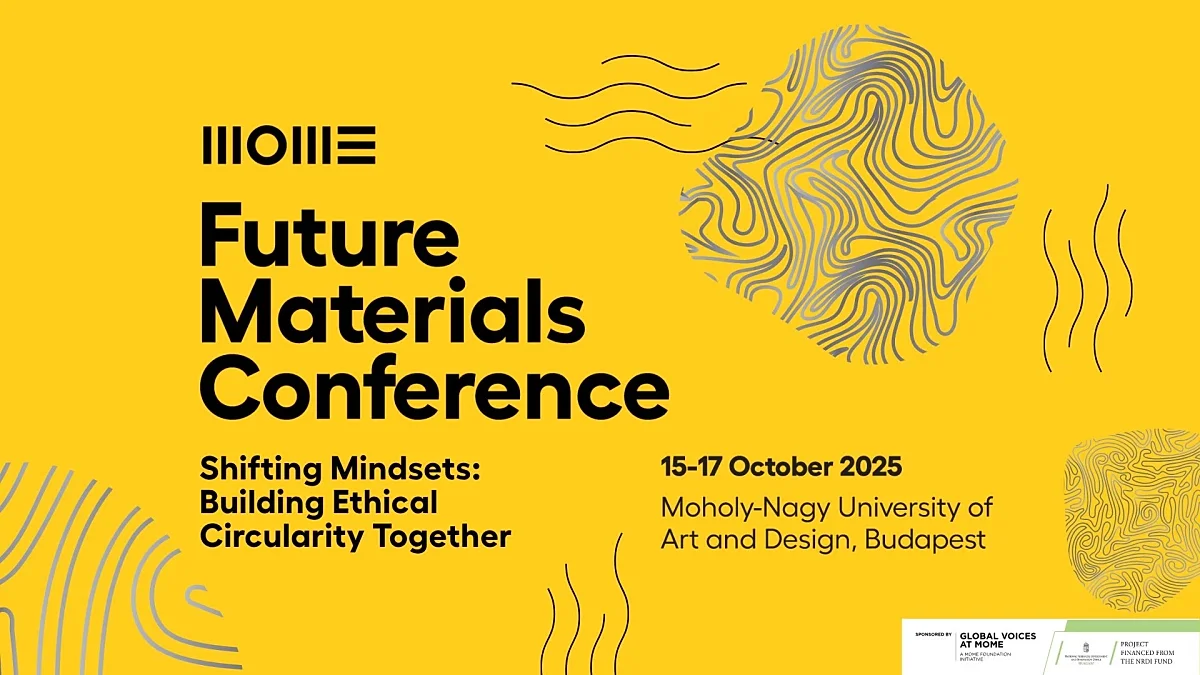
FUTURE MATERIALS CONFERENCE ’25 – Spotlight on circular economy
This year’s edition placed the spotlight on materials that support a circular economy, the social responsibilities that accompany material innovation, and the ways material science can shape the future, framing the discussion around four distinct angles. The ‘Synergy with Flora and Fauna’ track shifted the focus beyond the human perspective, inviting participants to consider design through the lens of ecological balance and planetary wellbeing rather than human-centred needs. ‘Circular Seeds’ explored the behaviour of materials themselves and how designers respond to these properties in the shaping process. ‘Linking Academy & Industry’ sought to bridge academic innovation and industrial application, offering an inside look at circular material technologies within digitally controlled, machine-based and reproducible workflows. ‘Circular Scalability’ turned the discussion to circularity in scalable industrial contexts, asking what truly works and what breaks down when circularity is translated into scalable industrial practice.
A number of this year’s speakers began their careers in the maker movement and have since become influential figures in contemporary design and industry. Maker legend Davide Gomba, known worldwide for his work with Arduino and for founding Italy’s first FabLab, set the tone with insights drawn from two decades at the heart of open-source innovation. Founder Bas van Abel, who moved from DIY electronics and the Waag Society into establishing Fairphone, offered an equally compelling perspective. His repairable and upgradeable smartphone has become a flagship example of circular thinking in the technology sector.
From digital craft to community-driven experimentation, the line-up also included Associate Professor Kristina Andersen of TU Eindhoven, senior lecturer József Kovács of MOME, and designer Amália Gerstenkorn, who brought a Generation Z perspective shaped by maker culture and digital fabrication. Together, their work shows how the ethos of the makerspace has grown into a driving force behind sustainable innovation and industrial transformation.
Another key contributor was Pan-Projects Co-Founder Kazumasa Takada, whose research focuses on reusing industrial by-products. Recently invited to Japan by WIRED magazine, he explored how regenerative design could shape urban development. Designer Vlasta Kubušová came from neighbouring Slovakia to join the event. As Co-Founder of the award-winning Crafting Plastics! Studio and, more recently, the Better Matter studio established at Design Academy Eindhoven, she works across design, materials research, and sustainable innovation. Her practice spans applications ranging from furniture and interiors to gastronomy, showing how design-driven materials thinking can take root across multiple disciplines.
Several speakers work at the intersection of bio-based materials and micro-ecosystems. Italian designer Barbara Pollini of Aalto University brought a biodesign perspective, drawing attention to the value of slow, local, and regenerative processes and to the significant role these can play in cultivating resilient ecosystems within cities. In addition to her talk, she led a workshop titled Minimum Viable Ecosystems, where participants explored how to create bioreceptive sculptures, installations, and surfaces that support biodiversity.
The programme also featured Brazilian researcher Rebeca Duque Estrada from the Institute for Computational Design and Construction (ICD) at the University of Stuttgart. Her research looks at hybrid systems that employ fibrous composite materials and investigates various approaches to automating manufacturing, with a particular emphasis on combining natural fibres with timber. On the applied side, Studio Nima ran a workshop exploring how new discoveries in this field can be scaled up, tracing the journey that emerging bio-material innovations take as they move from the laboratory into real-world use.
Anyone curious about the trailblazers of material innovation found plenty to take in during Chris Lefteri’s session. The author of Materials for Design and Making It has shaped the way designers approach materials for decades, with long-running bestsellers with multiple editions. His work shows how materials can act as true agents in the design process and offers clear thinking on what to use, when to use it, and why it matters in industrial product design. His writing unpacks each material in depth from timber to plastics, offering comprehensive guidance on surface treatments as well.
Speculative design formed another key strand of the programme, introduced by Canadian Professor Ron Wakkary, whose perspective is shaped by decades of pioneering research. A leading figure in more-than-human design, he examines how human-centred design can be pushed beyond its usual limits, bringing technology, ecology, and speculative thinking into dialogue. Alongside his work at Simon Fraser University, he is the founder of the Everyday Design Studio, specialising in interaction design and research.
The focus then shifted to materials reshaping today’s construction landscape. Professor Philippe Block (ETH Zürich) shared new findings on low-carbon concrete and the structural strategies that make genuinely sustainable building feasible. Architect Áron Losonczi continued with the latest developments on Litracon, his globally patented light-transmitting concrete, outlining where the technology is heading next.
This year’s Future Materials Conference also formed part of the official programme of the Budapest Design Week, and its workshops and exhibition offered a rare, regionally unique opportunity for anyone interested in circularity and materials to gain up-to-date insight into the field.
☞ Date: Wednesday to Friday, 15–17 October 2025
☞ Venue: MOME Campus
☞ More details and tickets
☞ Facebook event: https://fb.me/e/3EuIuMQ86
